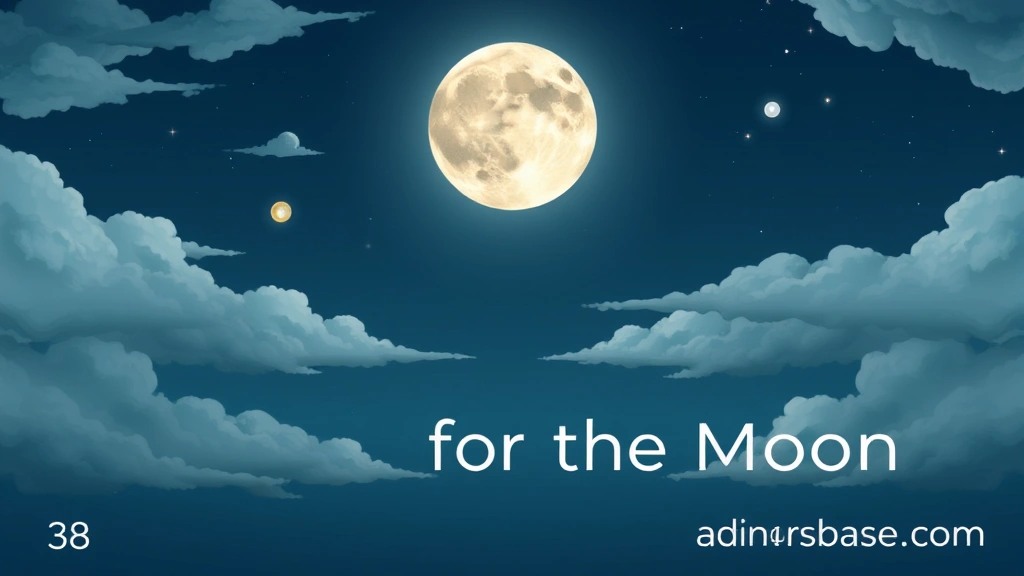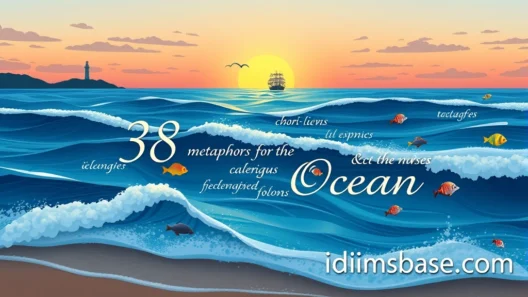Have you ever gazed up at the night sky and felt a profound sense of wonder? That glowing orb, sometimes a sliver, sometimes full and magnificent, has captivated humanity for millennia. The moon, our celestial neighbor, isn't just a rock orbiting Earth; it's a muse, a symbol, a silent witness to our history. From ancient myths to modern poetry, it has inspired countless metaphors. Let's embark on a journey to explore 38 captivating metaphors for the moon, unlocking the poetic beauty and diverse interpretations it has inspired across cultures and ages. You'll be amazed at how many ways we can describe this familiar yet mysterious light in the darkness!
Metaphors for the Moon: A Luminous List
The moon, in its various phases and moods, lends itself to an incredible array of comparisons. Each metaphor offers a unique perspective, painting a vivid picture in your mind.
The Moon as a Light Source
It's the most obvious, yet the most profound. The moon's primary role in our night sky is to illuminate, even if it's just reflecting the sun's brilliance.
- A Silver Lantern: Imagine a soft, glowing lantern hanging in the vast darkness, casting a gentle, ethereal light. It doesn't glare; it illuminates.
- A Pearl in the Sky: Pearls are rare, precious, and possess a soft, iridescent glow. This metaphor highlights the moon's beauty and gentle luminescence.
- A Spotlight on the Stage of Night: The moon often seems to highlight certain features of the landscape, like a theatrical spotlight on a dark stage.
- Nature's Nightlight: Just like a child's nightlight, the moon provides comfort and a subtle glow, chasing away the deepest shadows.
- A Lone Lighthouse: Guiding ships safely to shore, a lighthouse stands as a beacon. The moon, too, can feel like a distant, guiding light in the vastness.
The Moon as a Celestial Body
Beyond its light, the moon is a physical entity, a sphere with its own characteristics.
- The Earth's Constant Companion: Always there, always orbiting, a loyal friend to our planet. This emphasizes its unwavering presence.
- A Cosmic Mirror: Reflecting the sun's light, it acts as a mirror, showing us a subtle, softened version of daytime.
- The Sky's Eye: Watching over us, observing the world below with a silent, all-seeing gaze.
- A Silent Sentinel: Standing guard over the night, observing everything without interference.
- A Celestial Orb: A perfect sphere, hanging majestically in the cosmos, symbolizing completeness and mystery.
The Moon as a Person or Being
Often, we imbue inanimate objects with human qualities, and the moon is no exception. This anthropomorphic approach makes it feel more relatable.
- The Queen of the Night: Majestic, regal, ruling over the nocturnal hours with serene authority.
- The Guardian of Dreams: Watching over us as we sleep, protecting our subconscious journeys.
- A Shy Lover: Sometimes hidden behind clouds, only peeking out coyly, like a hesitant admirer.
- The Sky's Old Friend: A familiar face, a comforting presence that has been with humanity for eons.
- A Pale Face: Describing its color and shape, often evoking a sense of calm or even sadness.
- The Night's Gentle Mother: Nurturing, comforting, providing a soft embrace to the sleeping world.

The Moon's Phases and Transformations
The moon's ever-changing appearance offers a rich source of metaphorical inspiration.
- A Silver Sickle: When it's a crescent, its sharp, curved shape resembles a farming tool.
- A Cosmic Smile: The crescent moon often looks like a gentle, upturned smile in the sky.
- A Slice of Melon: A more whimsical take on the crescent, imagining a juicy, curved fruit.
- A Cosmic Coin: Round and sometimes full, like a shining coin dropped from the heavens.
- A Ghostly Ship: Drifting through the clouds, sometimes appearing and disappearing like a vessel on a misty sea.
- The Sky's Pendulum: Swinging through its phases, marking the passage of time.
- A Waning Jewel: As it shrinks, it becomes a precious gem that is slowly diminishing.
- A Growing Bloom: As it waxes, it unfurls like a flower coming into full blossom.
The Moon's Emotional and Symbolic Associations
The moon often evokes feelings, moods, and deeper symbolic meanings.
- A Symbol of Change: Its constant waxing and waning perfectly illustrate the cyclical nature of life and transformation.
- The Keeper of Secrets: Silent and ancient, it seems to hold untold stories and mysteries.
- A Canvas for Dreams: Its soft light and mysterious presence make it a perfect backdrop for imagination and fantasy.
- A Beacon of Hope: In the darkest night, its light provides a glimmer of optimism and guidance.
- The Heart of the Night: The central, pulsing essence of the nocturnal world.
- A Cosmic Pause Button: Its serene presence invites reflection, slowing down the hurried pace of life.
- A Tear Drop in the Sky: For its soft, sometimes melancholic glow, evoking a sense of tender sadness.
- The Whisperer of Tides: Its gravitational pull directly influences the oceans, making it a powerful, unseen force.
- A Silver Coin of Solitude: Often associated with quiet contemplation and being alone with one's thoughts.
- A Cosmic Oracle: Believed by some to hold prophetic powers or reveal hidden truths.
- The Dream Weaver: Spinning tales and images in our sleep, influencing our subconscious.
- A Cosmic Chess Piece: Moving strategically across the sky, part of a larger, intricate game.
- The Night's Compass: Guiding travelers and sailors through the darkness.
- A Celestial Melody: Its silent presence creating a harmonious, calming effect, like a soft tune.

Isn't it fascinating how one celestial body can spark so many different interpretations? Each metaphor paints a picture, adding layers of meaning to our understanding of the moon.
Key Takeaways
- The moon inspires a vast array of metaphors due to its changing phases, light, and constant presence.
- Metaphors often categorize the moon as a light source, a celestial body, a personified being, or a symbol of change and emotion.
- These comparisons enrich our language and deepen our appreciation for the moon's beauty and mystery.
- Understanding these metaphors helps us connect with poetry, literature, and cultural interpretations of the moon.
FAQ: Your Questions About Moon Metaphors Answered
You might be wondering more about why we use so many metaphors for the moon. Let's delve into some common questions.
Q1: Why do people use metaphors for the moon?

A: People use metaphors for the moon for several reasons! First, it's a way to describe something complex or beautiful in a more vivid and relatable way. Instead of just saying "the moon is bright," saying "the moon is a silver lantern" paints a much richer picture in your mind. Second, metaphors help us express emotions and deeper meanings connected to the moon—like mystery, comfort, or solitude—that simple descriptions can't capture. They allow us to connect with the moon on a more profound, imaginative level.
Q2: What's the difference between a simile and a metaphor?
A: This is a great question often confused!
- Metaphor: A metaphor directly states that one thing is another thing, without using "like" or "as." For example, "The moon is the queen of the night." It creates a direct, imaginative equivalence.
- Simile: A simile compares two different things using the words "like" or "as." For example, "The moon is like a pearl in the sky." It suggests a resemblance rather than a direct identity.
Both are figures of speech that add color and depth to language, but metaphors are generally stronger and more direct in their comparison.
Q3: Are there cultural differences in moon metaphors?
A: Absolutely! The moon holds different symbolic meanings across cultures, which naturally leads to diverse metaphors. For example, in some cultures, the moon is seen as feminine and nurturing, while in others, it might be masculine and powerful. Some traditions associate the full moon with madness, while others see it as a time for celebration and abundance. These cultural nuances deeply influence the metaphors and stories people create about the moon.
Q4: How can I come up with my own moon metaphors?
A: It's fun to create your own! Here are some tips:
- Observe: Spend time looking at the moon. What does it remind you of? Its shape, color, light, movement, or even its effect on the environment.
- Think about its qualities: Is it bright? Gentle? Mysterious? Old? New?
- Connect it to something else: What other objects or ideas share those qualities? A pearl (gentle light), a coin (round shape), a silent guardian (mystery, watchfulness).
- Use your senses: What does the moonlight feel like? What sounds do you associate with it (silence, night sounds)?
- Don't be afraid to be creative: The best metaphors are often unique and unexpected!
Q5: Why is the moon so important in literature and poetry?
A: The moon is incredibly important in literature and poetry because it's a universal symbol that evokes a wide range of emotions and ideas. It's often used to represent:
- Mystery and the unknown: Its distant, silent presence.
- Change and cycles: Its waxing and waning phases.
- Love and romance: Moonlight is often associated with intimate moments.
- Solitude and reflection: A quiet companion in the dark.
- Guidance and hope: A light in the darkness.
- Time and eternity: An ancient presence watching over millennia.
Its rich symbolism makes it a powerful tool for writers to explore themes, set moods, and develop characters.
Conclusion
The moon, our faithful night companion, is so much more than just a satellite. It's a wellspring of imagination, a muse for poets, and a canvas for our deepest thoughts and feelings. By exploring these 38 metaphors, you've seen how humanity has tried to capture its essence, from a "silver lantern" to "the guardian of dreams." Each comparison offers a fresh lens through which to appreciate its enduring beauty and mystery. So, the next time you look up at the night sky, don't just see the moon. See the "cosmic mirror," the "queen of the night," or perhaps even "a celestial melody." What new metaphor will you discover? The sky, and your imagination, are the only limits!






